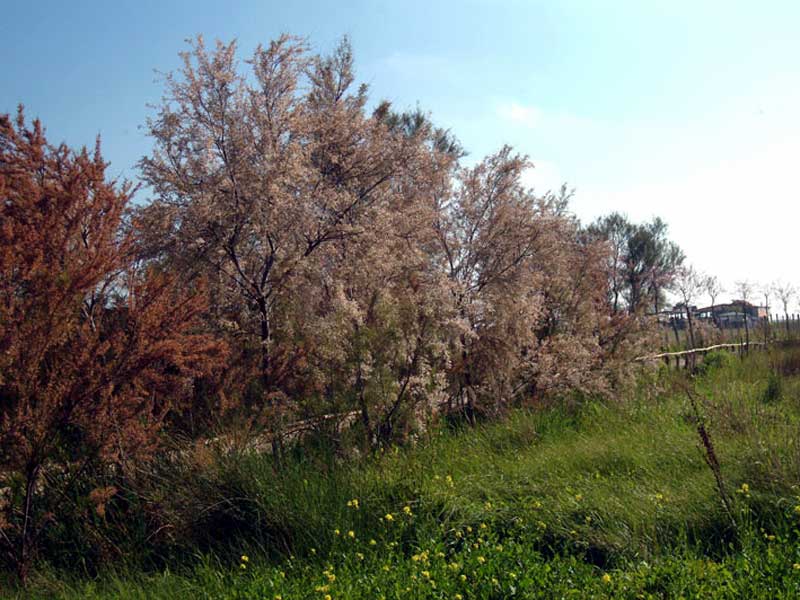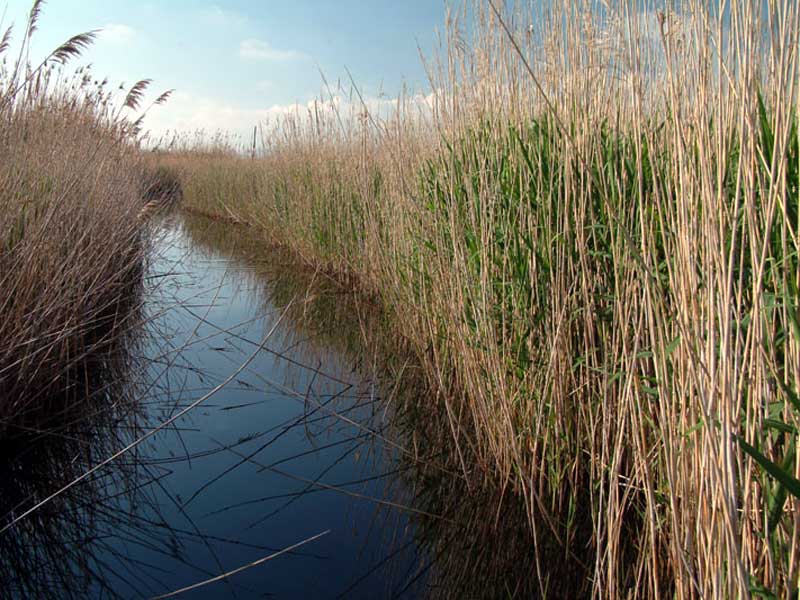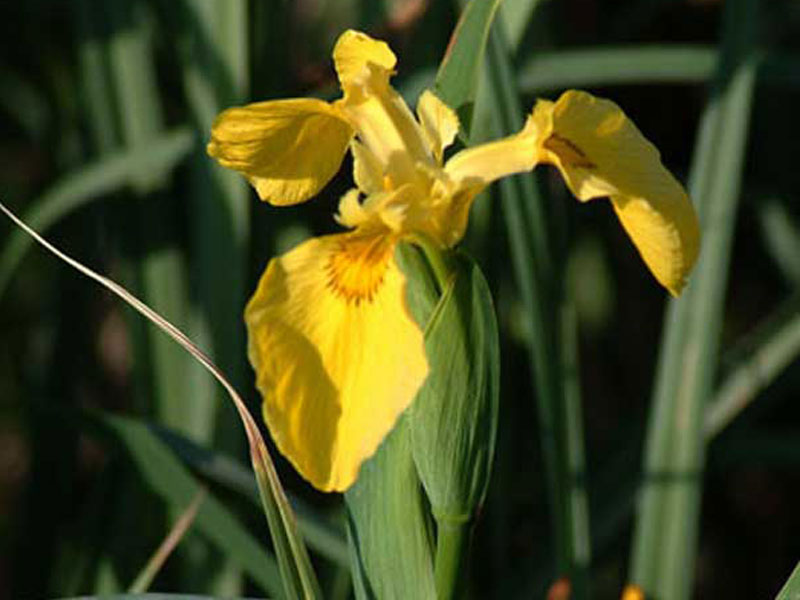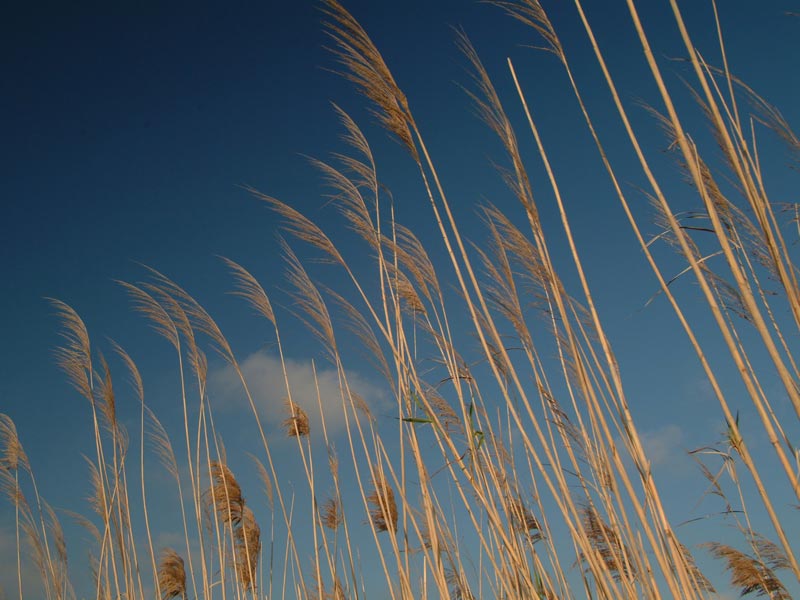Protected Area
Identity Card
- Land Surface Area: 43.00 ha
- Regions: Lazio
- Provinces: Roma
- Municipalities: Cerveteri, Ladispoli
- Establishment Measures: DPGR 613 24/03/1997
- PA Official List: EUAP1071
- Park Authority: Città Metropolitana di Roma Capitale
The Marsh of Torre Flavia
The Marsh of Torre Flavia is a very important wetland for the safeguard
of the migratory avifauna and for the preservation of the last stretch
of the ancient "maremma" (swampy coastland) of Lazio.
The wetland is
formed by a clayey-slimy ground rich in organic material of vegetal
origins giving origin to a carpet of decaying organic substance, which
is responsible for the formation of a blackish mud. Residual strips of
an ancient sandy dune separate the marsh form the sea. An artificial
jetty currently links to the coast the ruins of the ancient Torre
Flavia, which has remained isolated at about 80 meters from the beach
because of the very stressed phenomenon of coastal erosion.
The territory of Palude di Torre Flavia Natural Monument extends itself along the coast, between Cerveteri and Ladispoli, in
some stretches separated from the sea by a small sandy deposit and in
other stretches reached by the sea, which reveals part of the deposits
anciently originated by the slow accumulation of organic material
coming from the rests of plants, algae, and dead animals, consisting in
a very dark mud. The landscape is the typical landscape of the coastal
wetlands, which in the past were widespread along the coasts of Lazio,
when a big system of swamps and brackish marshes existed. Behind the
beach (subject to an intense erosion and withdrawal), a dune strip
runs, by delimiting the real marsh. The latter is formed by pools,
ponds and canals alternating with land tongues covered by a thick and
inaccessible canebrake penetrating into the heart of the marsh.
Part
of the submerged area is object of productive activity thanks to the
presence of a sustainable fish breeding plan whose management
contributes to the maintenance of the Marsh.
At the beginning of the
century, the land reclamation activities and the more recent
urbanization of Campo di Mare (in the 60s) have progressively reduced
the great original marsh up to the current 37 hectares. A period of
abandonment and decay began; the Province of Rome, in collaboration
with WWF Lazio, is trying to recover the area.
The area is a
Special Protection Area (SIC IT 6030020) belonging to Rete Natura 2000
located by the Italian Department of Environment according to the
directive 79/409/CEE "Birds". In the open sea area in front of the SPA
there is also a Site of Community Importance ("Secche di Torre Flavia"
SIC IT 6000009; Dir. 92/43/CEE "Habitat") safeguarding the Posidonia oceanica beds.
Flora and Vegetation
The territory of Palude di Torre Flavia Natural Monument extends itself along the coast; in some stretches it is separated from
the sea by a small sandy deposit and in other stretches it is reached
by the sea, which reveals part of the deposits anciently originated by
the slow accumulation of organic material coming from the rests of
plants, algae, and dead animals.
The flora mainly consists of
wetland species differentiating according to the degree of water
saltiness they adapted to. As a matter of fact, the salts dissolved in
the sea water give origin to the so-called "physiological dryness"
leading the cells to lose water through osmosis: despite this, the
halophilic vegetable species, characteristic of saline environments, survive
thanks to their capacity to accumulate in the cell juice solutes which
are not toxic for the species, in order to be able to absorb the water
from outside also in the brackish marshes and on the sandy coasts. In
some halophytes, the concentration of solutes is so high that in the
past some species were gathered to extract from them chemical
substances, like in the case of species of the genus Salsola, from
which soda and other substances were extracted in order to produce
detergents and glass. In the most inner and farther part from the sea,
beyond a strip of meadows strongly influenced by the human
intervention, there are emerged meadows with herbaceous species adapted
to environments which are not submerged, but are constantly wet, like
the Hairy Sedge, a Cyperaceae which is typical of the wet uncultivated
lands. In the depressed area, where the water is sweeter, deeper, and
persistent, species which are characteristic of stagnant waters develop, like
the Common water Crowfoot, while at the edges the vegetation is
dominated by the common reed.
Further information (Italian text)
Fauna
The area is extremely interesting from the ornithological point of
view. On the sea shore it is still possible to observe waders, mainly
aquatic migratory birds which can be seen above all during the winter
and in the migration periods. Among these, the Ruddy Turnstone, the
Oystercatcher, and the Plovers. In the brackish waters dominated by
glasswort we can find the Little ringed Plover, the Snowy Plover, the
Common Sandpiper, and the Green Sandpiper, besides the very elegant
Black-winged Stilt. Various duck species populate the inland stretches
of water: among them the Mallard, the Northern Pintail, the Garganey,
and the Common Teal. Among the canebrakes you can sight the Reed
Bunting, the Great Reed Warbler, and the Reed Warbler. These two
species of passerines, together with the Fan-tailed Warbler, are also
nesting in the area and it would be of great importance to study the
structure and the dynamics of these populations, located by other
similar species.
Among the mammals we should mention the Water
Shrew. The realm of amphibians par excellence, you can find here the
common Green Frog and the Common Tree Frog, among the amphibians the
Grass Snake.
Further information (Italian text)










